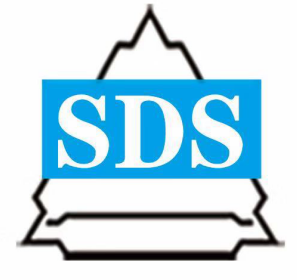Application of Steel Fiber Reinforced Concrete Material in Repair Engineering of Old Concrete Pavement
1. Steel fiber concrete materials
Steel fiber reinforced concrete is a new type of high-strength composite material composed of a certain number of short and thin steel fibers mixed with ordinary concrete. Because steel fiber retards the generation of cracks in the matrix concrete, it not only has the excellent properties of ordinary concrete, but also has good flexural resistance, impact resistance, fatigue resistance, low shrinkage, good toughness, and strong wear resistance. The thickness of the road surface can be reduced by more than 50%, and the distance between the shrinkage joints can be increased to 15m-30m, without the need for expansion joints and longitudinal joints. Steel fiber reinforced concrete has round and straight, melt-drawn and shear types of steel fiber. Its length is divided into various specifications, the best aspect ratio is 40-70, the cross-sectional diameter is in the range of 0.4mm-0.7mm, and the tensile strength is not less than 380MPa. During construction, the mixing amount of steel fiber in the concrete is 1.0% to 2.0% (volume ratio), but the maximum mixing amount should not exceed 2.0%. The cement adopts 425#~525# ordinary Portland cement to ensure that the mixture has high strength and wear resistance. The maximum grain size of coarse aggregate used in steel fiber reinforced concrete is 2/3 of the length of steel fiber. It should not be larger than 20mm. The fine aggregate is medium-coarse sand, with an average particle size of 0.35mm~0.45mm, and a bulk density of 1.37g/cm3. The sand ratio is 45% to 50%.
2. Mix ratio of steel fiber reinforced concrete
The requirement of the mix ratio of steel fiber reinforced concrete can firstly reduce the thickness of the pavement, and secondly ensure that the steel fiber reinforced concrete has a higher flexural strength to meet the structural design's requirements for strength levels, namely compressive strength and flexural strength, and also ensure the ease of construction.
The test results show that the cement dosage, sand ratio and water-cement ratio are determined on the basis of experience and calculations, and tests are carried out according to the strength of steel fiber concrete at different ratios of steel fiber dupplier. When the cement dosage is between 380kg/m3 and 400kg/m3, the strength is higher, but at this time the sand rate is smaller, and there is separation in the sand. Therefore, the sand ratio is adjusted to 0.48, so although the strength is reduced, the other properties can be improved. To this end, adjust the best ratio of cement: yellow sand: crushed stone: water = 1:2.16:2.34:0.48.
3. Mixing of steel fiber reinforced concrete
In order to prevent the fiber agglomeration during mixing of steel fiber reinforced concrete, the mixing volume per mixing during construction should not exceed 80% of the rated mixing volume of the mixer. The rolling mixer is used for mixing, and the steel fiber must be evenly distributed during the mixing of the concrete. In order to ensure the mixing quality of the concrete mixture, the mixing process of drying first and then wet is adopted. The feeding sequence and mixing time are: coarse aggregate → steel fiber (1 min dry) → fine aggregate → cement (1 min dry). The steel fiber is added to the mixer three times during mixing, and the steel fiber is added while mixing. Pour in yellow sand and cement, remix for 2min~3min after all the materials are put in, and finally add enough water to wet mix for 1min. The total stirring time is not more than 6min, and super-stirring will cause the wet fiber to agglomerate. The mixture mixed according to this procedure is uniform. If in the mixing process, first adding cement and coarse and fine aggregates, and then adding steel fibers, it is easy to form clusters. Moreover, the fiber clusters become tighter and harder to separate as they roll. Once fiber clusters are found, they must be removed to prevent the quality of the concrete from being affected.
4. Steel fiber reinforced concrete pouring
Steel fiber reinforced concrete pouring is the same as ordinary concrete, pouring and vibrating are important links in construction, which directly affect the integrity and compactness of steel fiber reinforced concrete. The difference is that its fluidity is poor, and honeycombs are easily generated at the corners. Therefore, the corners can be tamped with a ram first. The corners of the board are vibrated with a plug-in vibrator, and then flattened back and forth with a ram beam board. In the process of smoothing the concrete surface, the steel fiber is easy to emerge from the road surface due to its thicker diameter, which affects driving safety, so it should be removed during construction.
 English
English 한국어
한국어 français
français Deutsch
Deutsch русский
русский português
português العربية
العربية tiếng việt
tiếng việt ไทย
ไทย Polska
Polska Nederland
Nederland